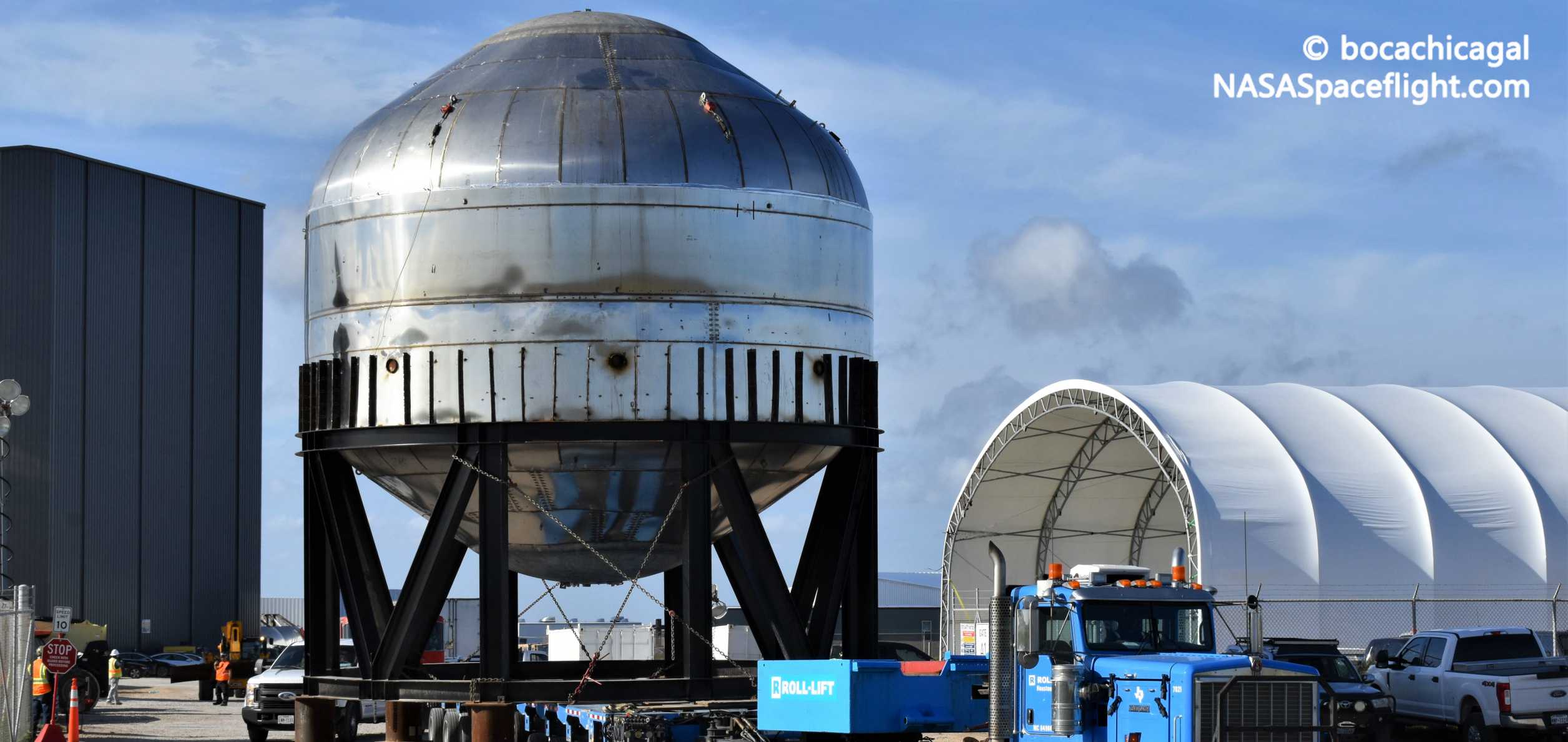
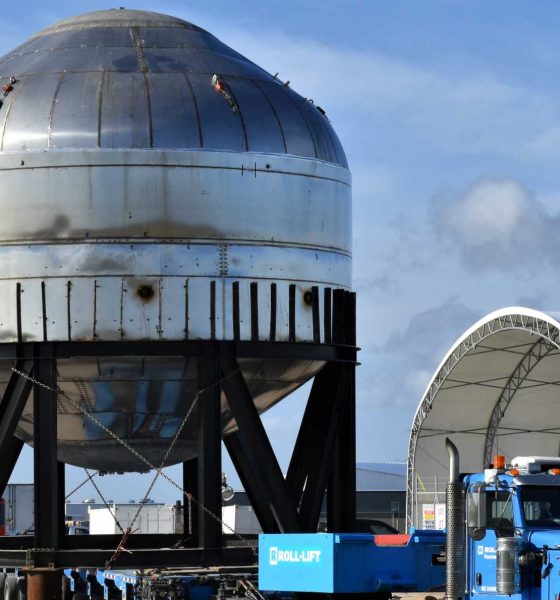
News
SpaceX prepares new Starship tank for explosive test after rapid construction
Over the last few weeks, SpaceX’s South Texas Starship team has been making progress at a pace unprecedented even for the famously agile rocket company and is moving full speed ahead to kick off a new series of explosive tests as early as this morning.
Ever since SpaceX’s original Starship Mk1 prototype spectacularly failed during a November 2019 pressure test, the company has been rapidly rearranging and modifying the development schedule for its next-generation full-reusable rocket. Be it a side effect or coincidence, SpaceX effectively began closing its Florida Starship factory a week after Mk1’s demise and even shipped some of its Florida-built Starship hardware to Texas in recent weeks. However, most of the Florida workforce (up to 80%) was reportedly redirected elsewhere in the company, avoiding layoffs.
Some portion may have even moved to Texas and joined SpaceX’s Starship Boca Chica facilities. Given just how aggressively SpaceX has been expanding its local facilities and preparing new hardware for the next round of improved Starship prototypes, it seems quite likely that the South Texas outpost did indeed receive an influx of skilled workers. Most recently, the company has demonstrated its rapidly growing expertise in the bizarre art of building steel rockets en plein air by fabricating and integrating new tank domes and steel rings and then shipping the curious contraption to its nearby launch site in a matter of weeks from start to finish.
Although it’s difficult to determine the chronology of every single part of the mysterious new tank, it’s fairly safe to say that work on its structure began less than a week before SpaceX CEO Elon Musk tweeted a surprise update, indicating on December 27th that he was in Boca Chica, Texas working all night on “Starship tank dome production”.
In simple terms, the business half of SpaceX’s next-generation Starship upper stage and Super Heavy boosters are comprised of three main parts, shared by almost all launch vehicles. Both are rocket stages that must be as light as physically possible while supporting thousands of tons worth of supercool liquid oxygen and methane propellant. The majority of a simple rocket is ultimately a duo of cylindrical tanks capped by tank domes – also known as bulkheads. The bottom bulkhead of boosters and upper stages also serves as a mounting point for an engine section, where the vehicle’s rocket engines are attached to the rocket body in order to transfer their thrust throughout the rest of the structure.
SpaceX CEO Elon Musk says that Starship tank domes have turned out to be “the most difficult part of [the rocket’s] primary structure” to manufacture, thus explaining why he was apparently assisting the Boca Chica team all night on December 27th.
Starship Mk1 exploded on November 20th, 2019 during a nonflammable propellant loading test, a failure that unofficial videos have compellingly linked to the weld joint connecting the rocket’s upper tank dome to its cylindrical tank. That section of the rocket began leaking cryogenic propellant moments before the entire upper dome tore off the rest of the vehicle and launched hundreds of feet into the air.
All hail Baby Tank
In an apparent response to the unsatisfactory results of Starship Mk1’s manufacturing methods, SpaceX has rapidly initiated an already-planned upgrade of its Starship facilities and manufacturing methods in South Texas, taking delivery of a wealth of new tools over the last several weeks. Most recently, SpaceX’s latest step towards demonstrating that it has substantially improved manufacturing quality arrived in the form of a single propellant tank – the same diameter as Starship Mk1 but much shorter than any possible flight hardware.
Quickly nicknamed Bopper (short for Baby Starhopper) by locals and close followers, the miniature Starship test article came together at a truly spectacular pace. Comprised of two single-weld steel rings and two brand new tank domes, it appears that all four of the components were nothing more than parts and steel stock less than three weeks ago. The first sign of activity came around December 19th, when technicians began placing pressed steel sections onto a bulkhead (dome) assembly jig – used to precisely hold the pieces in the right shape and place as they are welded together.
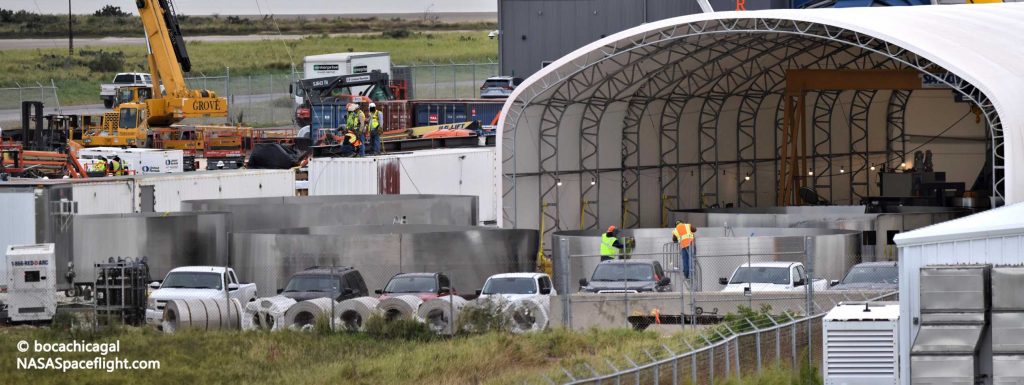

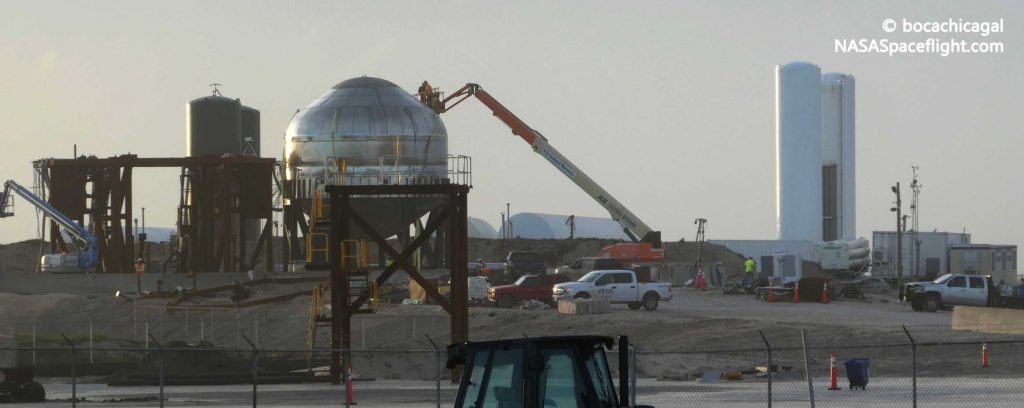
Incredibly, aside from taking less than three weeks to go from miscellaneous parts to an assembled Starship tank delivered to the test site, SpaceX technicians appeared to finish stacking and welding its two halves (each a ring and a dome) perhaps a handful of hours before it was lifted onto a transporter and driven to the launch pad.
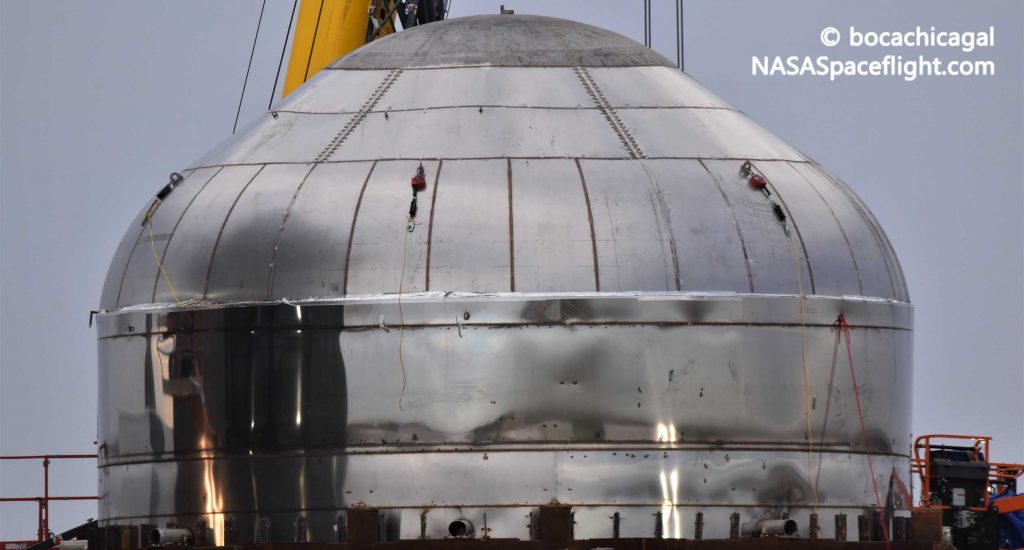
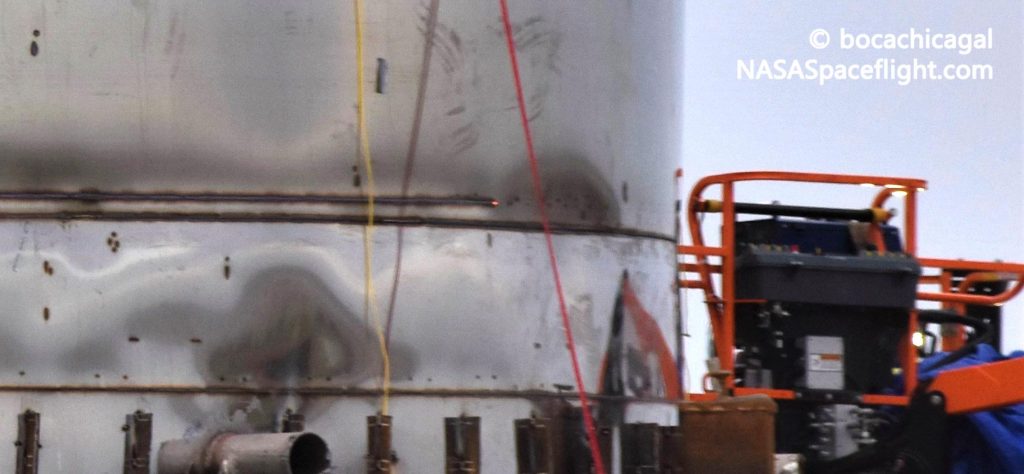
Even for SpaceX, moving a prototype from factory to test site hours after its primary structure was welded together represents an almost unfathomably fast pace of work – truly unfathomable in traditional aerospace. Whether or not such a pace of work is smart, sustainable, or worth it remains to be seen, but SpaceX is nevertheless on track to pressure test its new mini Starship tank as early as this morning, potentially resulting in another spectacular overpressure event (i.e. explosion).
If the tank survives up to or beyond the pressures SpaceX has designed it to, it’s safe to say that the next full-scale Starship prototype could come together far sooner than almost anyone might have expected.
Check out Teslarati’s Marketplace! We offer Tesla accessories, including for the Tesla Cybertruck and Tesla Model 3.

News
Tesla adds 15th automaker to Supercharger access in 2025
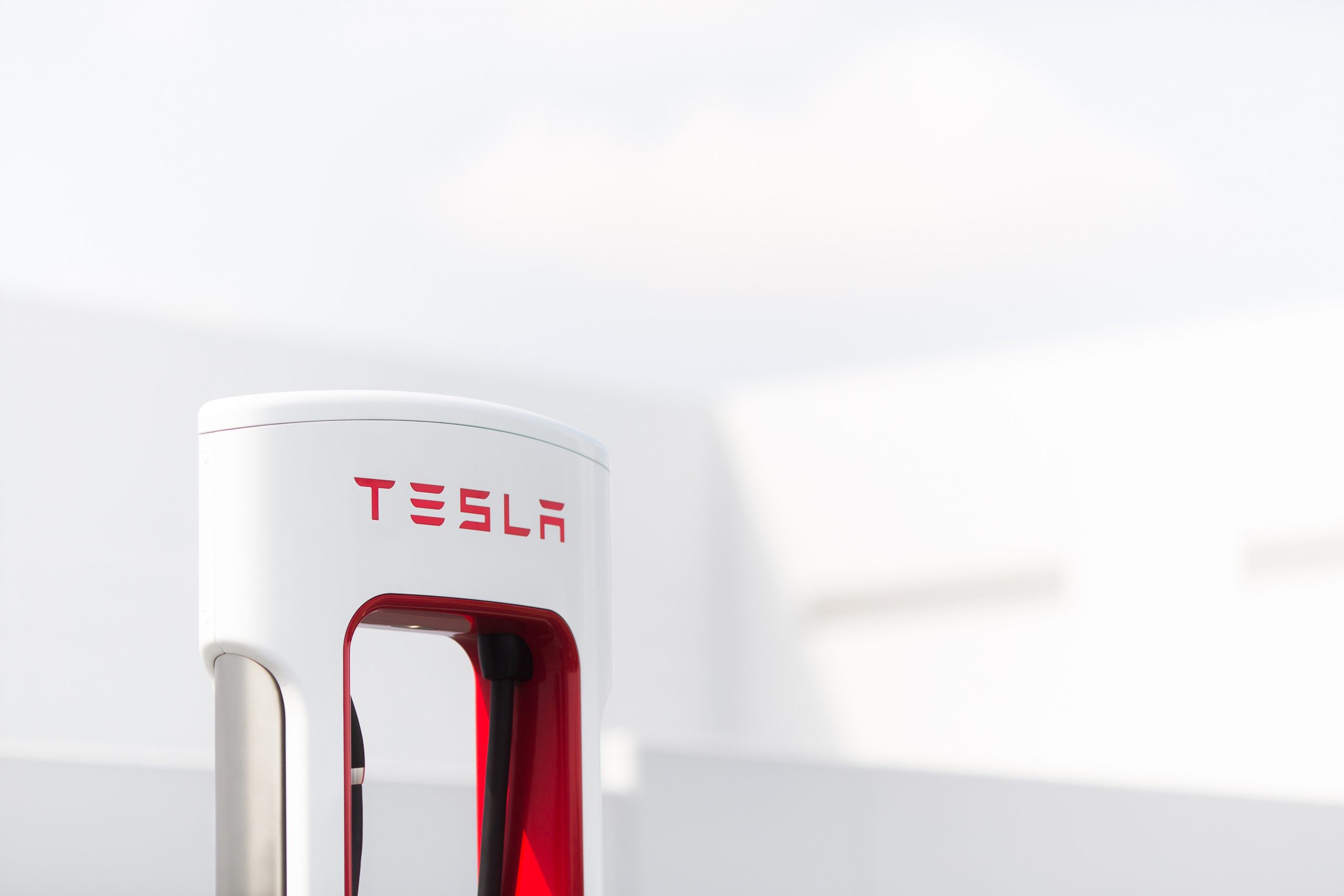
Tesla has added the 15th automaker to the growing list of companies whose EVs can utilize the Supercharger Network this year, as BMW is the latest company to gain access to the largest charging infrastructure in the world.
BMW became the 15th company in 2025 to gain Tesla Supercharger access, after the company confirmed to its EV owners that they could use any of the more than 25,000 Supercharging stalls in North America.
Welcome @BMW owners.
Download the Tesla app to charge → https://t.co/vnu0NHA7Ab
— Tesla Charging (@TeslaCharging) December 10, 2025
Newer BMW all-electric cars, like the i4, i5, i7, and iX, are able to utilize Tesla’s V3 and V4 Superchargers. These are the exact model years, via the BMW Blog:
- i4: 2022-2026 model years
- i5: 2024-2025 model years
- 2026 i5 (eDrive40 and xDrive40) after software update in Spring 2026
- i7: 2023-2026 model years
- iX: 2022-2025 model years
- 2026 iX (all versions) after software update in Spring 2026
With the expansion of the companies that gained access in 2025 to the Tesla Supercharger Network, a vast majority of non-Tesla EVs are able to use the charging stalls to gain range in their cars.
So far in 2025, Tesla has enabled Supercharger access to:
- Audi
- BMW
- Genesis
- Honda
- Hyundai
- Jaguar Land Rover
- Kia
- Lucid
- Mercedes-Benz
- Nissan
- Polestar
- Subaru
- Toyota
- Volkswagen
- Volvo
Drivers with BMW EVs who wish to charge at Tesla Superchargers must use an NACS-to-CCS1 adapter. In Q2 2026, BMW plans to release its official adapter, but there are third-party options available in the meantime.
They will also have to use the Tesla App to enable Supercharging access to determine rates and availability. It is a relatively seamless process.
News
Tesla adds new feature that will be great for crowded parking situations
This is the most recent iteration of the app and was priming owners for the slowly-released Holiday Update.
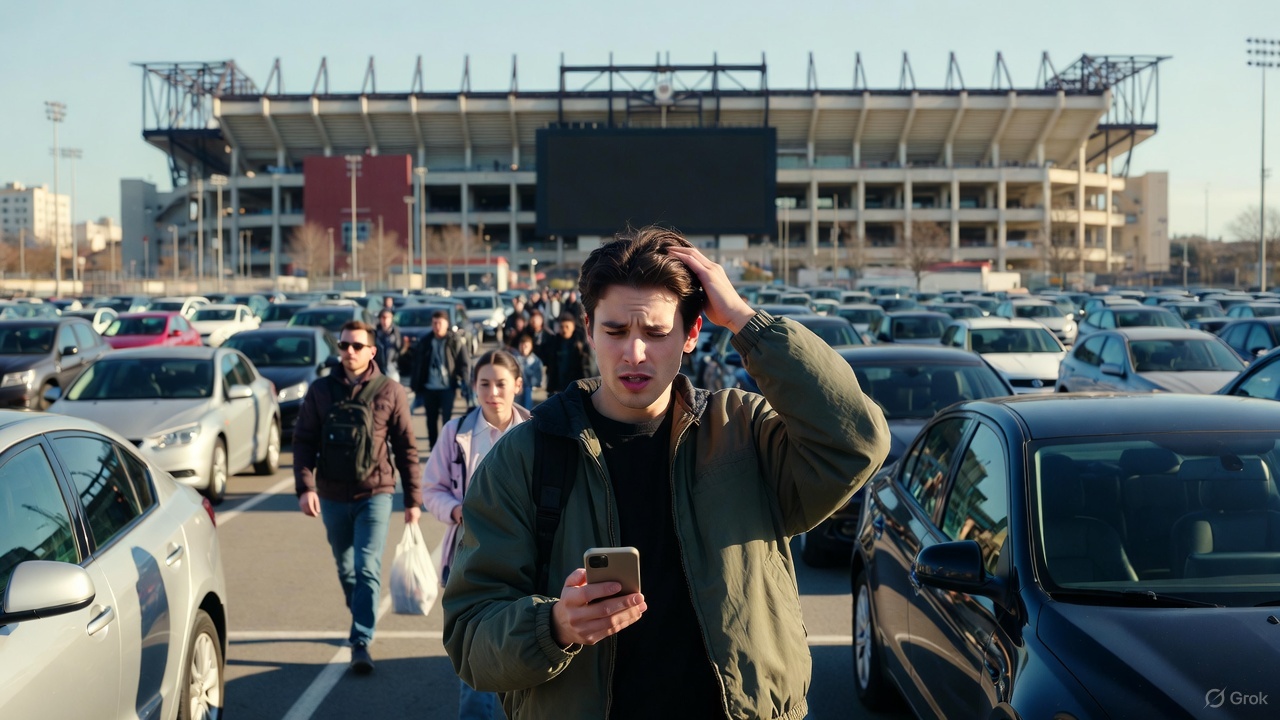
Tesla has added a new feature that will be great for crowded parking lots, congested parking garages, or other confusing times when you cannot seem to pinpoint where your car went.
Tesla has added a new Vehicle Locator feature to the Tesla App with App Update v4.51.5.
This is the most recent iteration of the app and was priming owners for the slowly-released Holiday Update.
While there are several new features, which we will reveal later in this article, perhaps one of the coolest is that of the Vehicle Locator, which will now point you in the direction of your car using a directional arrow on the home screen. This is similar to what Apple uses to find devices:
Interesting. The location arrow in the Tesla app now points to your car when you’re nearby. pic.twitter.com/b0yjmwwzxN
— Whole Mars Catalog (@wholemars) December 7, 2025
In real time, the arrow gives an accurate depiction of which direction you should walk in to find your car. This seems extremely helpful in large parking lots or unfamiliar shopping centers.
Getting to your car after a sporting event is an event all in itself; this feature will undoubtedly help with it:
The nice little touch that Tesla have put in the app – continuous tracking of your vehicle location relative to you.
There’s people reporting dizziness testing this.
To those I say… try spinning your phone instead. 😉 pic.twitter.com/BAYmJ3mzzD
— Some UK Tesla Guy (UnSupervised…) (@SomeUKTeslaGuy) December 8, 2025
Tesla’s previous app versions revealed the address at which you could locate your car, which was great if you parked on the street in a city setting. It was also possible to use the map within the app to locate your car.
However, this new feature gives a more definitive location for your car and helps with the navigation to it, instead of potentially walking randomly.
It also reveals the distance you are from your car, which is a big plus.
Along with this new addition, Tesla added Photobooth features, Dog Mode Live Activity, Custom Wraps and Tints for Colorizer, and Dashcam Clip details.
🚨 Tesla App v4.51.5 looks to be preparing for the Holiday Update pic.twitter.com/ztts8poV82
— TESLARATI (@Teslarati) December 8, 2025
All in all, this App update was pretty robust.
Elon Musk
Tesla CEO Elon Musk shades Waymo: ‘Never really had a chance’

Tesla CEO Elon Musk shaded Waymo in a post on X on Wednesday, stating the company “never really had a chance” and that it “will be obvious in hindsight.”
Tesla and Waymo are the two primary contributors to the self-driving efforts in the United States, with both operating driverless ride-hailing services in the country. Tesla does have a Safety Monitor present in its vehicles in Austin, Texas, and someone in the driver’s seat in its Bay Area operation.
Musk says the Austin operation will be completely void of any Safety Monitors by the end of the year.
🚨 Tesla vs. Waymo Geofence in Austin https://t.co/A6ffPtp5xv pic.twitter.com/mrnL0YNSn4
— TESLARATI (@Teslarati) December 10, 2025
With the two companies being the main members of the driverless movement in the U.S., there is certainly a rivalry. The two have sparred back and forth with their geofences, or service areas, in both Austin and the Bay Area.
While that is a metric for comparison now, ultimately, it will not matter in the coming years, as the two companies will likely operate in a similar fashion.
Waymo has geared its business toward larger cities, and Tesla has said that its self-driving efforts will expand to every single one of its vehicles in any location globally. This is where the true difference between the two lies, along with the fact that Tesla uses its own vehicles, while Waymo has several models in its lineup from different manufacturers.
The two also have different ideas on how to solve self-driving, as Tesla uses a vision-only approach. Waymo relies on several things, including LiDAR, which Musk once called “a fool’s errand.”
This is where Tesla sets itself apart from the competition, and Musk highlighted the company’s position against Waymo.
Jeff Dean, the Chief Scientist for Google DeepMind, said on X:
“I don’t think Tesla has anywhere near the volume of rider-only autonomous miles that Waymo has (96M for Waymo, as of today). The safety data is quite compelling for Waymo, as well.”
Musk replied:
“Waymo never really had a chance against Tesla. This will be obvious in hindsight.”
Waymo never really had a chance against Tesla. This will be obvious in hindsight.
— Elon Musk (@elonmusk) December 10, 2025
Tesla stands to have a much larger fleet of vehicles in the coming years if it chooses to activate Robotaxi services with all passenger vehicles. A simple Over-the-Air update will activate this capability, while Waymo would likely be confined to the vehicles it commissions as Robotaxis.








